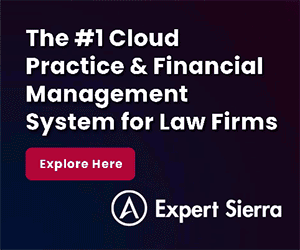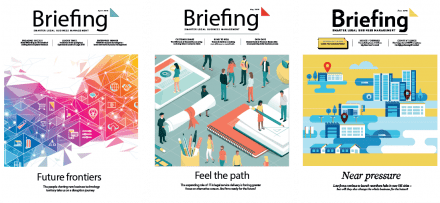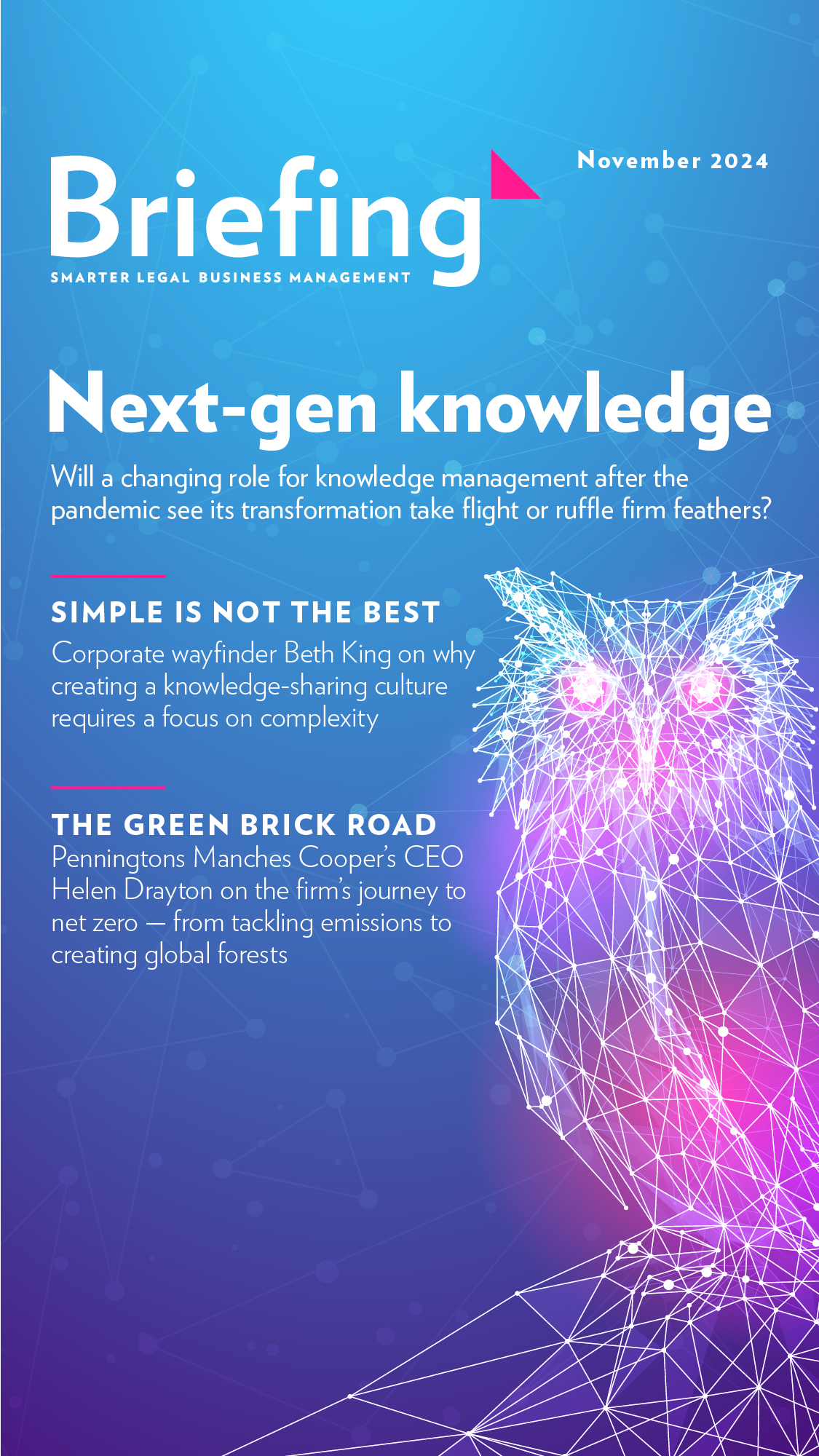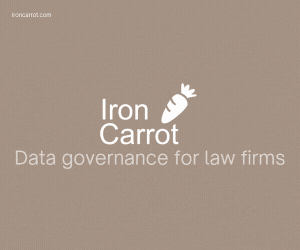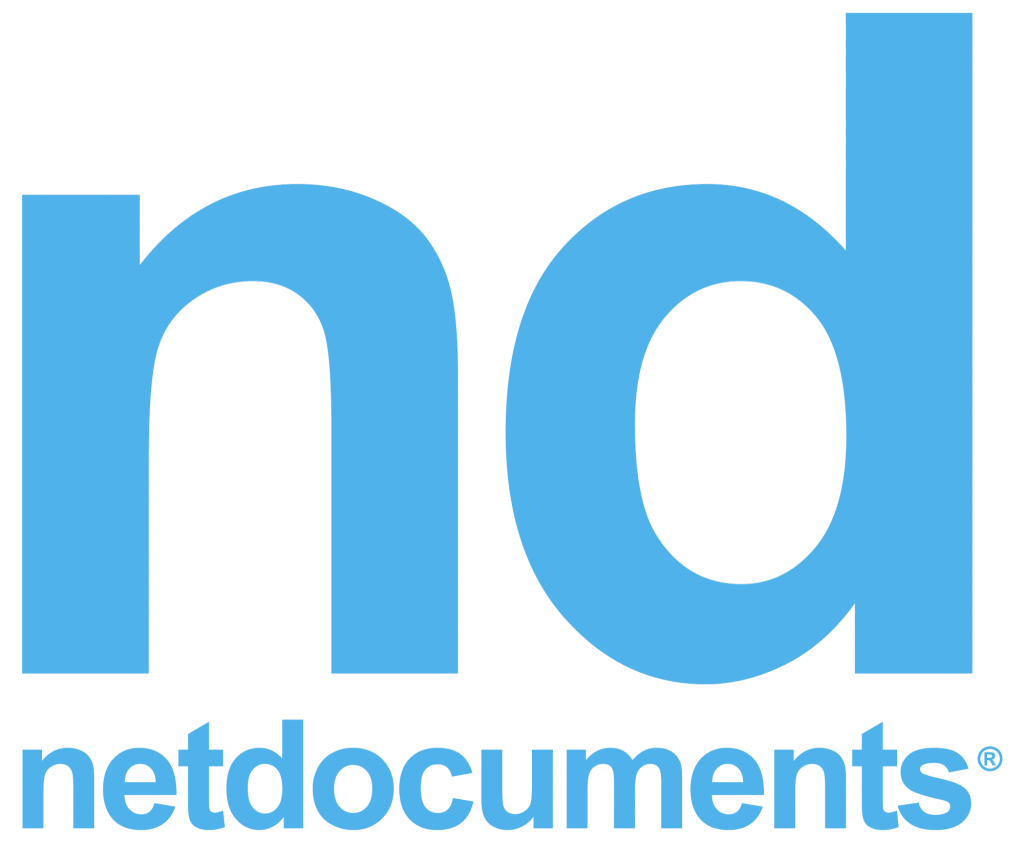Briefing webcast: considering the cloud-first era
Karen Jacks|Chief technology officer, Bird & Bird
Mike Creffield|Business manager, EMEA, NetDocuments
Reem Khurshid|Editor, Briefing
In this Briefing webcast, hear how the legal operations team at BMW Group is part of a committed cloud-first push for the confidence to pull on “a single source of truth” facilitated by a common platform approach across this 130,000-strong company.
Berhard Waltl explains that technology is no longer a factor limiting his team’s ambition to deliver as a “digital-first legal department”, with the ability to handle full document lifecycles, including collaboration with law firms and other external parties. The ability to invite people into a reliable and secure data room setup to progress both litigation and transactional work puts the department on the digital front foot as an enabler for other parts of the business. Waltl says the single source of truth goal will also be vital in laying the ground for any efforts to unlock operational efficiencies using artificial intelligence in future.
However, while cloud-focused technology partners can also help a business to keep up with any emerging vulnerabilities and respond to growing risk proactively, Waltl says it’s the business that ultimately remains responsible for how cyber risk is handled. This relies on investment in robust process, and people with the requisite skills and awareness.
Karen Jacks, chief technology officer at Bird & Bird, points out that IT strategy and its resourcing become more complicated the more that cloud and on-premise products are meshed together. On-premise systems still offer value – they shouldn’t necessarily be written off yet as ‘legacy’ – but exciting new tech coming to market is inevitably cloud-first.
She agrees that a trusted cloud provider can help a firm to scale on its digital journey, but is equally clear this can’t replace its own intense risk management efforts. Specific clients can also sometimes prove a blocker to change through greater cloud adoption in some areas, she says. As a result, firms must be very clear how they’re mitigating any perceived risk with a combination of tech, process and people (for example, through educating with a regular programme of phishing campaigns).
But in fact, well managed, a cloud platform that effectively introduces and offers incentive for fresh ways to collaborate should prove a win for closer client relationships. With the necessary lawyer buy-in to replacing email for project comms, it can be a convenient platform to establish systems for tracking work’s progress and pushing out updates (which can potentially be tailored to client requirements). It can also be less resource-intensive as a space to trial new client service innovations in a cloud environment.
Or, watch the webcast on Youtube.
all change? not all at once
The Briefing team has already heard a lot about some of the perceived risks (and yes, plenty on the hoped-for rewards) when feeding generative artificial intelligence with lovely legal work — the need to manage access and consistent accuracy of output, and protect precious information in the process. Leaders must balance not pouring cold water on understandable excitement around new technology — including emanating from their clients — with the caution it’s often said lawyers are only too eager to love. Perhaps one day they’ll be pushing those same lawyers to use large language models more and more.
But here’s a new one (for me at least) — is there a risk that when and how to move on Gen AI is now sucking up just so much legal business energy that other pressing priorities can’t compete?
One attendee raised this at a recent challenge-sharing brunch we co-hosted with a couple of our good friends at NetDocuments — and it tied neatly to a wider point for many in the room about the common challenge of prioritising and resourcing the right change.
There’s a range of attitudes to AI to be engaged with in firms — and those at the coalface are fielding lots of client questions about it. So, when will we see what you’ve got? And — presumably — when will that attractive efficiency saving be passed on?
It’s always best to manage expectations. But what about focusing on changing the data quality AI will be crunching in any department? How about serving up that data to real live decision-makers in better ways? Or, as one said, are they spending the necessary amount of money and business leadership time on the strategy for facing increasingly complex cyberattacks? It’s a fair point. Among 14 potential organisational challenges listed out for strategic leaders to identify as “most concerning” in this year’s Briefing/HSBC Law firm strategy and investment research, cybersecurity came second only to keeping hold of talent.
Tech teams are seeing a plethora of generative AI ’add-ins’ to consider the case for — all adding to this potential risk that future tech wishes might distract from what simply must be done today.
Then, are the best new business ideas surfacing so their potential as a priority is properly assessed? One innovation leader pointed out that crowdsourcing from the ranks — as several have done — risked some submissions to innovation initiatives not getting enough exposure to stand a fighting chance. Now, each is assigned an ‘idea coach’, both to consider how it might realistically be tested and to clarify that all are taken seriously.
Perhaps the way budgets for such work are structured might need revising to give them a better chance or build more positive buy-in. What role should lawyers really play in the effort — just identifying ‘what’ they’d change, or also weighing in on ‘how’ to get there? And we heard the observation that some law firms have moved to decentralise their innovation teams — but then how to handle potential system proliferation?
Not to mention that innovation should have current process improvement in its sights as much as the quest for fresh product. And of course, even where a proof-of-concept makes it off the ground, ultimate success comes with measurable use over time, producing clear commercial or productivity gains. One leader at a large international law firm said a top priority was mining more data about how its tools were used — discerning the tangible difference they’ve made. Perhaps development or communication effort should be diverted elsewhere if this metric disappoints.
Every project going doesn’t need to be pursued at all costs. Clearly, that’s not to say Gen AI shouldn’t be an item on your strategic decision-making agenda — but innovation must always find a way to prioritise.
The September issue of Briefing hears from Dan Hauck, chief product officer at NetDocuments, about harnessing ‘responsible AI’ to help firms build a set of labour-saving apps within its platform.
Briefing webcast: unlocking the automation opportunity
Christopher Tart-Roberts|Head of Lawtech, and chief knowledge and innovation officer, Macfarlanes
Richard Brent|Head of content, Briefing
Mike Creffield|Business manager, NetDocuments
In this webcast, Briefing discusses the drivers, development and delivery of automation projects – including on a no-code basis – with business management leaders who are introducing change at top law firms.
Leading firms are increasingly seeking out options to save time and transform the experience of daily work, client service, or both, by harnessing the potential of process automation across business functions and specialisms.
Briefing head of content, Richard Brent, speaks to technology and transformation leaders about some of the latest opportunities to emerge and how to approach the area strategically, assessing both strengths and challenges to unlock impactful change – with Michelle Taylor, head of product portfolio at Lewis Silkin, and Christopher Tart-Roberts, the head of Lawtech and chief knowledge and innovation officer at Macfarlanes.
Briefing has produced this webcast in partnership with document and content management specialists NetDocuments.

collaborative cafe culture
Briefing Knowledge Leaders enjoyed their annual gathering in November 2022, and the Knowledge Café format of focused but friendly discussion to facilitate useful ideas-exchange also made a welcome return. A safe and secure space (of course), Briefing won’t report specific comments coming from those at the tables – but here’s a fairly hearty flavour of the big themes and connections that flowed forth.
Channels of change
Tables each focused on one of four core pillars of KM’s decision-making world, with our event partners facilitating, sharing, and finding the common threads.
Jenni Tellyn from 3Kites heard all about the challenge of managing KM talent’s path in the firm as opportunities change and transformed working patterns play out. Does the professional support lawyer’s trajectory in 2023 need a new framework (complete with fresh titles)? Or is there something else that might motivate and nurture desired kudos? Knowledge work always requires acceptance of a certain ‘delayed gratification’ in terms of seeing results – so it needs to be clearly and consistently regarded as important to build that appreciation over time. And, with some knowledge lawyers attempting to return to fee-earning following the pandemic, there may now be a prime opportunity to diversify the talent base, bringing in those from different business backgrounds or with less traditional aspirations. Either way, that talent needs to buy into its overall purpose for the firm to win at retention.
It was also noted that optimum adoption of new tools takes true, firm-wide effort. Collaboration platforms have been a tangible success story of the last three years – however, Alex Smith at iManage heard that this remains a disaggregated space, and knowledge needs to bring order amid concern about the various places it’s stored becoming too divergent. The new abundance of video recordings and other online meeting artefacts could be treasure troves for time-pressed lawyers, but the usage firms want to see requires training and management – not to mention good governance. People need to know which items and opportunities are indeed important assets – stored, shared and mined appropriately – or firms risk a retreat to greater reliance on email, which nobody savoured.
Ben Wild at Coveo also heard a tale of both opportunity and risk in transformation of working practice via a platform like MS Teams. There’s a chance to mine something more coherent, with greater equality of opportunity to contribute and be recognised, and to win points with collaboration-seeking clients. But the rules for bringing information into the picture from other sources remains a core challenge, as does adherence to frameworks for permissions and information protection and limiting the ‘noise’ that can obscure advantage.
At the same time as focusing on the urgencies of the now, knowledge needs to be thinking about what’s up next. Robert Windeyer at Clarilis heard that the big challenge when horizon-scanning is understanding what the client truly wants – is it in fact more about addressing a specific risk that could blow the business off course? This facet of knowledge work also relies on the input of multiple individuals, which limits how easy it is to scale and update efforts. As with sharing and collaborating on platforms, a big part of the job is finding a path that cuts through the noise and home in on what’s most crucial and/or competitive.
All of which brings us to: what should knowledge really be doing today with often limited resources and so many calls on them? Is it trying to do too much, or should the realm be confidently expanding where it believes itself the best bet for the job? Yana Georgieva at NetDocuments heard that the bread and butter is spreading best practice – process improvement – but senior stakeholders need to see the value. KM teams must avoid assuming they already do, and need to proactively push their best success stories to get the deserved seat at the top table.
And Kieron Champion at Fireman & Company heard that knowledge experts need to take part in conversations where they are both core and more peripheral. They won’t always be in the driving seat, but multidisciplinary team projects, effective training and onboarding, and use-case building depends on them. There are ever-more content channels and potential tech enhancements to support today – KM’s sphere of influence has clearly increased – can it maintain that position without diluting the core?
Changing tactics?
Then, following a presentation from Dr Pippa Lally, an expert in healthy habit-forming and how to influence people in desired directions, attendees applied themselves to change-management challenges in the KM space. Were there opportunities to win by emphasising social norms (‘look, everyone else is doing this’), reducing or increasing friction to make habits easier or harder to build, understanding ‘loss aversion’, framing objectives more persuasively in terms of losses or gains, or tackling ingrained biases?
Motivating greater knowledge-sharing was an understandably popular choice of goal. Do you really know what motivates an individual? Can you make it an expectation rather than an add-on to a role (a social norm) and overcome objections such as people complaining they don’t have the time (reframing a perceived loss)?
Another table discussed friction. People may simply not be confident they know what they should be sharing – or indeed how to do it. And what if their contributions don’t measure up? One suggestion was to identify process ‘trigger points’ for sharing – the arrival of the closing ‘deal bible’, for example. And can you get different practice groups competing for knowledge-harvesting kudos? As for loss aversion, will lawyers respond well to the notion that a dearth of decent knowledge is a crisis-in-waiting?
One group was clear that management mandates are unlikely to succeed in the long run, given the commitment required at the top. In addition to emphasising those social norms, find ways to close the distance between current workload and a contribution (an opportunity for automation?), and try to build a virtuous circle through feedback loops about what has been achieved as a result. The same could apply to combating any ‘bad’ browsing habits you want to break, instead serving the right knowledge at the right time using the document management system.
Never mind knowledge, what about fee-earners just recording the basics – the data that is the basis for better decision-making and continuous improvement? Build that into routines rather than make it a big deal, we heard – but don’t let it go. Consistency and culture are key – clear examples of excellence at the top, while also understanding the likely drivers of individual behaviour.
One interesting point raised was that consistently capturing and spreading best practice in official documentation might be harder when hybrid. Again, the idea of stoking competition to change behaviours was an attractive one, but you also need to treat change projects like a marketing campaign – proactively influence the momentum of positive word-of-mouth and don’t make assumptions where you encounter resistance. Instead, interview people to uncover the reality.
Finally, change leaders shouldn’t succumb to biases themselves – for example, about what different age groups in the workforce ‘want’. Thinking like this – particularly if articulated – could have the opposite of the desired, engaging effect. Indeed, younger lawyers may want more structure and consistency no less than the well-trodden path of expecting greater work-life balance. Most important is that individuals are heard and effort is made to understand.
Keeping employees onboard
No one could miss the trend of workers leaving their jobs in record numbers once pandemic restrictions began to recede. While there are complex reasons for this dramatic migration, what’s obvious is that many people weren’t happy with their existing employment, and now we’re seeing a war for talent with dramatic wage increases, and recruiters struggling to fill positions.
As a result, organisations are prioritising employee satisfaction to increase retention and attract talent. One of the primary factors influencing employee satisfaction is the option of flexible work, and technology plays a vital role in enabling people to work wherever and whenever they want (while also meeting organisations’ needs). With these drivers in mind, we predict a rise in technology being used to boost employee satisfaction and retain talent.
Why technology?
Employees are seeking more than just flexible schedules – they want the ability to easily work on any device from home, while travelling or anywhere else they happen to be. People are increasingly expecting work technologies to be modern, user-friendly solutions that they can adopt quickly and rely on however and wherever they’re working.
One of the primary factors influencing employee satisfaction is the option of flexible work, and technology plays a vital role in enabling people to work wherever and whenever they want (while also meeting organisations’ needs).
Warrick McLean, CEO at Coleman Greig Lawyers, was recently quoted in our trends whitepaper about this pivotal period for law firms: “The iPhone has been around since 2007, which means professionals working in our organisations have literally had a smartphone their entire lives. It’s intuitive, easy to use – naturally all technology is like that, right? And then they enter a law firm and don’t understand why our systems can’t do this or won’t allow that. We’re in the midst of a pivotal period in which law firms need to realise that every business is a technology business. And legacy, on-premises systems will stick out as clunky and inefficient to today’s young professionals. The longer it takes for your organisation to implement modern, easily accessible tools that enable a collaborative culture, the more talent you stand to lose and the more your service delivery to clients could suffer.”
Seek out cloud-native tools that optimise the remote work experience. Look for features like video meetings, real-time chat, and seamless mobile document and email management. Review common workflows and collaboration tools and determine how easily tasks can be accomplished on mobile devices or from remote workspaces. And consider that, if more applications can live under a vendor’s umbrella of services and with better integrations (fewer apps and fewer clicks), that speaks to the centrality of user experience.
As Joy Heath Rush, CEO of the International Legal Technology Association, put it: “To attract and retain top talent, we must make the employee experience better, make it easier to do work, provide professional development and mentorship opportunities and otherwise differentiate our business from others – all of which can be enabled by technology.”
Conclusions from the Great Resignation
In addition to organisations using technology to improve employee satisfaction, we also expect to see a trend of more intentional offboarding – formally enacting processes around the transfer of responsibilities once an employee leaves a business or retires – to gain insight into the causes of turnover, and tighter access controls to prevent data exfiltration.
There is also an opportunity for leaders who are willing to be first-movers in making their law firms more accessible and inclusive. Paul Unger, partner at Affinity Consulting Group, notes: “This sudden new way of working brought to light the need to consider how individuals with disabilities access technologies and perform work. Enhancing accessibility improves the overall user experience and could be a differentiator in recruiting talent and enhancing the quality of life for people with disabilities.”
The security impact of the Great Resignation is significant. It’s common for employees to share documents with their personal email addresses and devices to make remote work easier, creating security vulnerabilities. And new job announcements make it easy for malicious actors to target new employees with phishing schemes. Mobile data and device management will be a critical part of ensuring your data remains secure in today’s new normal.
The security impact of the Great Resignation is significant. It’s common for employees to share documents with their personal email addresses and devices to make remote work easier, creating security vulnerabilities. And new job announcements make it easy for malicious actors to target new employees with phishing schemes. Mobile data and device management will be a critical part of ensuring your data remains secure in today’s new normal. We’ll also see cybersecurity teams evolve into cyber-resiliency teams.
Tech that puts people first
Employees who experience ineffective business technologies can become discouraged, disconnected, and ultimately disengaged. The Great Resignation has presented new opportunities to get creative with how technology supports an individual’s success. When we utilise technology to prioritise employee satisfaction, we’ll experience very purposeful in-person workplaces, employees who are loyal and happy, and a thriving culture that allows you to find, grow and retain top talent from around the world.
To find out more, visit: www.netdocuments.com
are law firms on top of hybrid-working challenges? Legal IT experts discuss a cloud-based culture
Dawn Ingle, IS director, Shoosmiths|
Anthony Stables, CIO, Forsters|
Mike Creffield, business manager, NetDocumentsnt for professional services, Salesforce|
How can law firms adapt to the cultural, security and collaboration challenges of working in a hybrid environment? Are legal businesses truly leveraging the advantages of cloud technologies? And how can legal leaders push ahead with technological transformation while staying in lockstep with their organisation’s cultural status quo?
These are some of the questions Briefing attempted to answer in our latest webcast: The platform for a more collaborative and secure law firm culture.
Watch on to hear our expert panel answer questions around these topics and discuss the road ahead for the use of cloud-based legaltech:
- Richard Brent, head of content, Briefing
- Dawn Ingle, IS director, Shoosmiths
- Anthony Stables, CIO, Forsters
- Mike Creffield, business manager, NetDocuments
New hybrid horizons
To begin, Stables contributed an overview of the recent tech transformation project at Forsters, ‘Project Apollo’, including the management of documents, a broad change of tech systems undertaken from 2018 onwards. Part of the rationale for this and other transformations was the need to drive on with agile working methods, he added, and a change of practice management system – a huge challenge for the firm.
Further changes included implementation of NetDocuments, making it possible to search pdfs, track use of documents, and the linking of documents and matters to one another as well as financial information and audit logs.
Having a more accessible, “omni-channel” approach to information and technology is one area Stables added into the mix, and one which Ingle at Shoosmiths echoed. She also discussed the challenges around law firm culture and people expectations, as well as capturing ‘watercooler conversations’. Facilitating those information exchanges is likely to take place on MS Teams open channels – though getting people talking face-to-face is a major part of the wellbeing and cultural values of the firm, she said, and WFH productivity burnout – including getting away from Teams where possible – is an issue IT perhaps will struggle to solve alone.
Both surfaced points around wellbeing issues and facilitating hybrid working on a human level, including Stables’ exhortation to avoid hybrid training calls at almost all costs.
Hear more hybrid-working insights in the full webcast recording
Want to watch the video on YouTube? Click here.
Keeping cloud secure
Keeping client data secure is fundamental to any law firm, but with shifting workplace norms and the need for increased remote collaboration capabilities, maintaining that security is more important than ever. There’s no shortage of cloud solutions on the market offering easy remote collaboration and the ability to digitally store and manage thousands upon thousands of documents – but it’s critical to know how to find the right cloud solutions that provide the level of data security and compliance the legal industry requires.
For most lawyers, the need for secure data storage revolves primarily around documents and matter-related correspondence. Most law firms have already transitioned away from extensive (and expensive) storage of physical paper documents and towards on-premises digital storage through document management systems (DMS). Now, cloud-based DMSs are becoming the preferred way for law firms to store sensitive documents, in addition to opening up additional benefits:
- Robust Security: Whereas on-premises systems rely on a law firm’s own IT and security resources – which have competing priorities – cloud providers have a strong incentive to commit extensive resources to securing their customers’ data.
- Accessibility: Cloud storage enables legal professionals to securely access, search and manage files from anywhere and on any device.
- Enhanced Collaboration: Storing documents in the cloud makes it simpler for lawyers to easily collaborate with both their colleagues and clients.
Affordability: Compared to the setup and ongoing costs of on-premises digital storage solutions that require software licenses, hardware maintenance and more, cloud storage platforms are much less expensive, typically requiring only a one-time implementation cost plus predictable monthly user fees.
True cloud vs hosted cloud
While both true cloud and hosted cloud solutions offer secure digital document management, there are important differences to note. Also called SaaS (software as a service), ‘true cloud’ solutions are designed, developed and built on the cloud from the start. They are multi-tenant, meaning data is securely stored in data centres with connected servers, allowing customers to have their own private space within a network of shared computing resources.
Data is kept private, but because the cost of hosting the data is spread out among many users, these solutions tend to be more affordable. Also, true cloud solutions provide automatic updates across their entire user base (including software updates, data backups and security patches), taking the guesswork out of data security. This also means that each time a new type of compliance certificate is required, all users on the platform inherit it automatically, without any effort on their part.
Hosted cloud, on the other hand, are on-premises platforms adapted for cloud deployment rather than being cloud-native solutions. Hosted cloud solutions are single-tenant, storing data in a dedicated, private cloud.
True cloud solutions provide automatic updates across their entire user base (including software updates, data backups and security patches), taking the guesswork out of data security. This also means that each time a new type of compliance certificate is required, all users on the platform inherit it automatically
Because hosting costs are not split among all of the platform’s users – and when you add in maintenance fees and software licenses – hosted cloud solutions tend to be pricier.
Questions to ask before choosing a cloud solution
Here are a few important priorities to consider when deciding on a potential cloud storage solution.
- How will the solution maintain or enhance security? A firm’s reputation hinges on client trust and the ability to keep client data safe, which means security should be a make-or-break factor when selecting any cloud solution.
- Can user access be controlled down to the document level? The ability to granularly customise user access to each document ensures confidential information remains protected from unauthorised access.
- Does the solution offer version control? Managing document collaboration can quickly become a headache if multiple, conflicting versions are being passed around. The ability to keep track of file versions, along with a complete version history, can help avoid confusion.
- How does it integrate with the firm’s current work tools? Storage solutions should be able to seamlessly integrate within an existing working environment, which includes current tools, operating systems, and processes, so that it enhances, rather than hinders, productivity.
- Does the solution offer any additional collaboration tools? Look at solutions that not only allow for documents to be passed back and forth between colleagues and clients, but also offer workflows, real-time communication, messaging, and more.
- Will the provider stay compliant with regional regulations? Find out how the provider plans to consistently stay up-to-date with regional compliance regulations, how compliance updates may impact daily operations (and if it’s automated or requires manual intervention), and how client data is impacted with each update.
Due diligence will help ensure you know how to select the right tools, which features to prioritise and how well a solution will ensure your data stays safe and secure. The right cloud-based storage solution can provide unparalleled secure digital document management with the added benefit of a robust set of productivity and collaboration tools that is critical for the day-to-day operations of any law firm.
To find out more, visit: www.netdocuments.com
KNOWLEDGE AND IT LEGAL LEADERS DISCUSS DOCUMENT MANAGEMENT CHALLENGES IN A REMOTE WORKING WORLD
Alison Devlin, head of knowledge, Eversheds Sutherland |
John Hunter, chief information officer, Council of Europe|
Simon Ferres, CIO for legal, Deutsche Bank |
Dan Hauck, chief product officer, NetDocuments|
As law firms are set to shortly have their hybrid working models tested out in practice, can their people access and work on documents as effectively as they should? Do they have the tools needed to ensure client service is still a top priority, even when remote? And how do firms factor the risks associated with sensitive information into a world of remote document management?
These are the questions our panel of legal document management and knowledge experts aimed to tackle in Briefing’s latest webcast: How to transform remote collaboration. With three legal leaders from three very different organisations all having completed or facing document management system (DMS) migrations, and all facing similar challenges, we heard how each was tackling the task of balancing access to documents against the risks of losing control over content. Chaired by Richard Brent, editor-in-chief of Briefing, our speakers were:
- Alison Devlin, head of knowledge, Eversheds Sutherland
- John Hunter, chief information officer, Council of Europe
- Simon Ferres, CIO for legal, Deutsche Bank
- Dan Hauck, chief product officer, NetDocuments
Documenting collaboration
Kicking off, we heard how John Hunter at the Council of Europe realised the organisation’s IT strategy needed an efficiency revamp. Working with over 10,000 external parties, however, access and security were a high priority. In order to migrate its 35m documents from shared drives and public folders to a single platform, Hunter explained the organisation had to develop a strong change management process.
That’s an issue also highlighted by Simon Ferres at Deutsche Bank, who said much of the migration to DMS provider NetDocuments has included a “carrot and stick approach”. In terms of lessons learned so far from rolling out a new DMS, he said it’s been important to keep an open mind and put the time in to get the most out of the IT investment: “When it comes to decision-making in the design phase, don’t just accept the status quo. You may not make back your ROI if you don’t challenge it.”
Command and control
Aside from also having a new DMS on the horizon, at Eversheds Sutherland, Alison Devlin outlined a Teams-based initiative executed at the firm to create new content in support of regulatory horizon scanning for the financial services practice. MS Teams channels supported a global approach to frictionless sharing and collaboration on that issue, though she acknowledged the challenge this approach poses to the idea of a single source of truth – an issue being grappled with across many organisations.
So, how to tackle the issue of controlling content in this new world? That risk is something John Hunter is also looking at, with a keen eye on use of collaboration tools like Teams, which, if unchecked, could be akin to “opening up the Wild West” when it comes to keeping a rein on documents and knowledge. That’s why collaboration spaces and tools that retain data and communications transparently are so useful, he added.
The need to bring together content and invite people into a single platform to get the benefit of a collaborative approach – while retaining control – is a common theme across many firms, said Dan Hauck. That approach necessarily includes keeping an eye on integration with related tools like Teams, he said, for which tech providers like NetDocuments have a large role to play.
Learn more about where each of our speakers is on the remote document collaboration journey, how they’re tackling emerging challenges and what solutions they recommend to solve common issues, plus hear answers to audience questions, by watching the full video.
Want to watch the video on YouTube? Click here.
deliver: virtual roundtable WITH NETDOCUMENTS
Guy Phillips, VP international business|NetDocuments
Elizabeth Benegas, general counsel|NetDocuments
Kelly Clay, global eDiscovery counsel and director of legal technology strategy|GSK
Kate Stanfield, director of knowledge management|Collas Crill
Lucy Dillon, chief knowledge officer|Reed Smith
Mabel Harvey, IT director|Fieldfisher
Richard Robinson, director, legal operations and litigation support|Toyota
VIRTUAL EVENT PARTNER
DELIVER is the last in our series of webcasts with our friends at NetDocuments, under the banner of Work Inspired. Briefing’s deputy editor Kayli Olson and Guy Phillips, VP international business at NetDocuments, talked to leaders across professional services firms to discuss about how they can improve productivity and deliver better value to their clients. We’ve looked at key areas each session to see how firms can ‘Protect, Organise Deliver, Plan and Learn’ from work.
For this session, we looked at how firms can harness the power of collaboration, innovation and technology to better coordinate teams and improve service delivery. Big thank you to those who joined us for this discussion: Elizabeth Benegas, general counsel, NetDocuments; Kate Stanfield, director of knowledge management, Collas Crill; Kelly Clay, global eDiscovery counsel and director of legal technology strategy, GSK; Lucy Dillon, chief knowledge officer, Reed Smith; Mabel Harvey, IT director, Fieldfisher; and Richard Robinson, director, legal operations and litigation support, Toyota.
Overall the series uncovered, challenges and solutions around key business areas:
- Collaboration – Collaboration tools and technology has changed working habits and is connecting dispersed teams – however it’s human connection that’s the key here.
- Experimentation – Firms have really started to lean in to trying new things and are understanding that the new normal isn’t set in stone; we’ll most likely have to stay agile in more ways than one.
- Joining up experiences across platforms – The pandemic has shown just how important it is to create a unified and clear experience across the firm both internally and externally.
- Security and risk – Risk and compliance and IT teams are closer more now than ever as well. And cybersecurity remains a high priority as teams learn to work from home, stay compliant and keep client data safe.
- Culture – Ultimately it comes down to people and culture. No successful technology or strategy roll out can be made possible without the full engagement and support of staff.
Watch the discussion now to see how our guests’ firms compare to yours.
Webinar time: 55 minutes. Take a look at the YouTube page for specific timestamps, so you can find content more easily.
organise: virtual roundtable WITH NETDOCUMENTS
Guy Phillips, VP of international business|NetDocuments
Simon Ferres, CIO|Deutsche Bank
Lynne Jones, head of library and information services|HFW
John Turner, COO|Ellisons Solicitors
VIRTUAL EVENT PARTNER
In this instalment of Briefing and NetDocuments’ Work Inspired series, we explore how law firms and their clients adopt systems and approaches to transform how they Organise key aspects of work.
Briefing editor-in-chief Richard Brent and VP of international business at NetDocuments Guy Phillips are joined by guests to discuss how technology is helping firms’ increasingly dispersed employees to collaborate with one another in new ways, in the interests of individual productivity and firm-wide efficiency – as well as the opportunities for automation to relieve repeated or redundant workload when all areas of the business are adapting to new challenges.
Simon Ferres, CIO for legal at Deutsche Bank, sets out the legal team’s method of collecting information about the key processes people already follow, before deciding which reveal strong potential for further automation in future – and only then assesses and prioritises the projects to pursue by likely impact. He also highlights the ways that law firms have best supported his business goals with their own automation expertise.
And John Turner, chief operating officer at Ellisons Solicitors, explains how the introduction of a new document management system has played a critical role in the firm’s response to the pandemic. Essential homeworking created a catalyst for accelerated digitisation of files, enabling paper-light processes, reorganisation and communication change, and of course great appreciation of the advantages of efficient access and new levels of agility.
Lynne Jones, head of library and information services at HFW, also joins the group to discuss where automation projects have produced the most tangible advantages in each of their businesses to date, the challenges when introducing and embedding them, and several other processes – human-focused no less than IT – that have needed to change.
Webinar time: 55 minutes. Take a look at the YouTube page for specific timestamps, so you can find content more easily.





